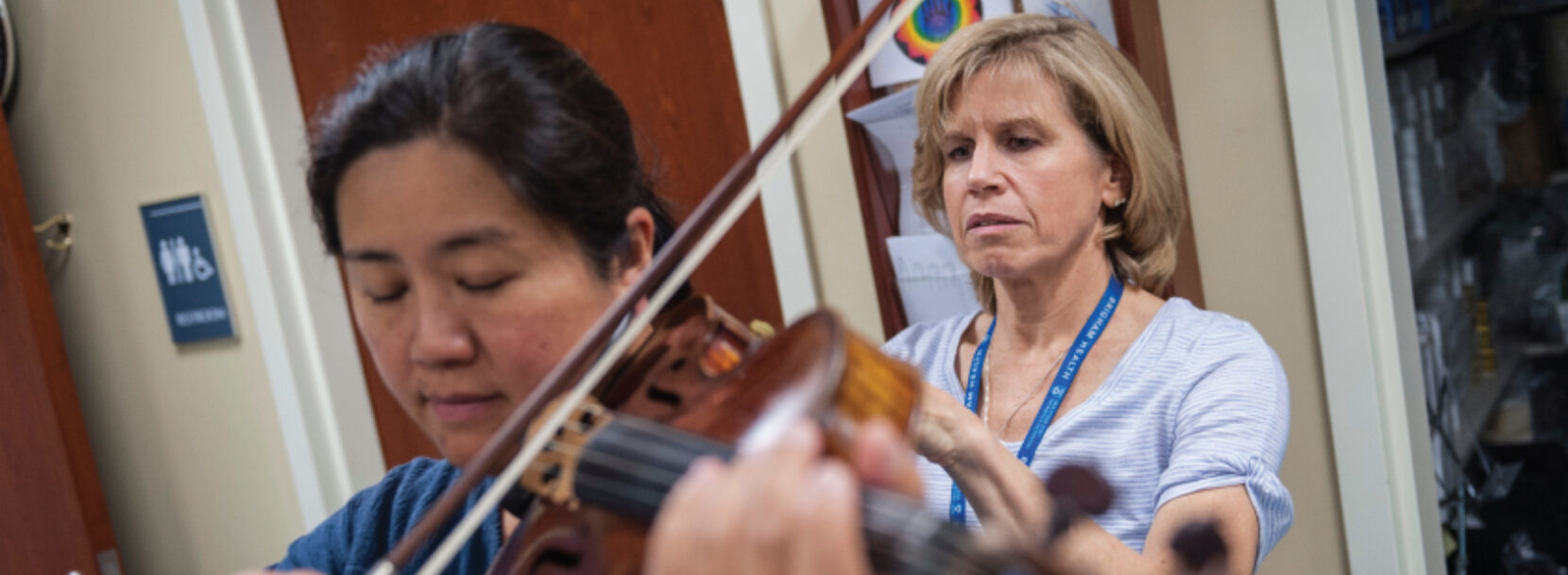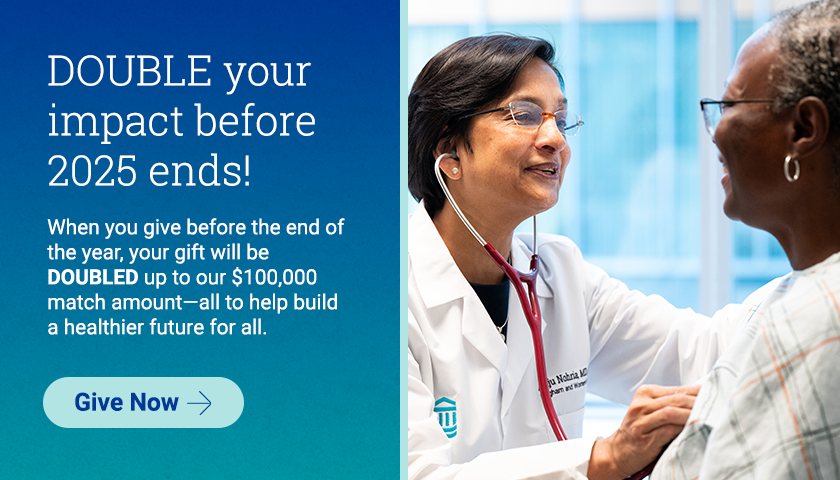
In Perfect Harmony: OT Helps Musician Patients Prevent, Treat Injuries
This article was originally featured in the Brigham Heart & Science newsletter.
Kelly Belinsky, MS, OTR/L, is an occupational therapist/hand therapist who has a unique specialty treating musicians with hand and upper extremity injuries.
She recently spoke with Brigham Heart & Science about how she got started, the treatment she provides and what she most enjoys about caring for this patient population.
When did you begin treating musicians?
KB: I was transferred from working on inpatient floors, primarily with neurosciences patients, to the outpatient hand therapy clinic in 1991. Michael Charness, MD, had started the Performing Arts Clinic and needed an OT. After visiting the clinic a few times, I learned that these patients were highly motivated and passionate about playing, and that music is a large part of their identity. I saw how OT could benefit both the physical and emotional aspects of their recovery. Since then, I have been collaborating with Dr. Charness and the other doctors in the clinic to promote healing and help these patients return to their optimal level of playing. We treat patients from all over the country.
What are some of the health issues musicians experience?
KB: By working closely with many music schools, musical groups, orchestras and freelance musicians in the area, I have come to appreciate the demands of practice, rehearsals and performances. Endless hours, repetitive motions and emotional and physical stress are part of everyday life for musicians, whether they are students, amateurs or professionals.
What is most important for their treatment?
KB: Musicians tend to present with a limited awareness of the extreme stress they endure physically and emotionally. They benefit from education on anatomy and the mechanisms of injury, general health and wellness, nutrition, sleep and body awareness. I also refer them to physical therapy, massage therapy, Alexander Technique (a method that changes movement habits in everyday activities) and body mapping professionals, college health and wellness practitioners and school counselors.
What does an initial OT visit usually include?
KB: I analyze posture and positioning, as well as the intricate movements required to play their instruments. I ask patients to bring their instrument to the first visit so I can make recommendations for adjustments to the instrument or the patient’s positioning with adaptive devices and techniques. I also refer them to professionals who can create or attach adaptive parts to the instruments to decrease stress on the body. Sometimes, treatment involves creative splinting for the patient to wear while playing or for rest; soft tissue mobilization; exercises for flexibility, strength and endurance; and body mechanics. I work with the patient on a paced, gradually progressive playing schedule to increase endurance with the instrument without increasing symptoms.
Could you share an example?
KB: For a flutist with an overuse injury in their bilateral forearms and hands, I may adapt the instrument with key extension, plugging some holes, positioning a gel pad where the left index finger contacts the flute and adding a thumb port to position the right thumb more ergonomically.
Scapula, shoulder and core strengthening are important for taking stress off smaller muscles in the forearms and hands. Hands-on OT treatment in the clinic helps to reduce symptoms, and then I help the patient implement an endurance strengthening program to prevent re-injury. Shoulder, upper arm, forearm and hand stretches before and after playing are also an important part of the home program.
How do you adjust instruments without affecting sound quality?
KB: I’ve had to learn a lot about as many instruments as possible, even ones that aren’t so familiar from other countries, like the Middle Eastern oud, the Irish flute and the Chinese guzheng. There are many international students attending the music schools in Boston, as well as professional musicians who perform here.
RELATED ARTICLES:
From a Harrowing Past Emerges a Brighter Future for Brigham Researcher
‘You Give Me Hope’: Volunteer Program Pairs Ostomy Patients with Peers
Celebrating Recovery with Narratives of Hope
